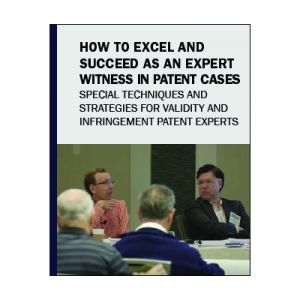Excerpted from SEAK’s Course: How to Excel as an Expert Witness in Patent Cases: Special Techniques
So again, it’s all about having ownership over your report. This is the same type of report that you would submit in district court litigation where you’re limited. This is your testimony. This is it. There’s nothing more after your declaration is submitted. You can get deposed and maybe you can offer some additional opinions at your deposition. That might come in. It’s a little harder to get that if they’re not in your actual declaration. So just to clarify a lot of what Mr. Speed is saying, the reports may be similar in some ways, but a declaration for IPR is really a different animal than a Rule 26 report for your district court case. So and some of the key differences are that with the IPR, you’re not gonna be at the hearing. So essentially, your declaration is your direct testimony, and your deposition is your cross-examination. So treat it as such. And the second thing is that your declaration and IPR will be read carefully by the PTAB judges whereas, when you go trial, the judge or jury are not gonna read your report. Your report is there only to make sure that the other side knows what you’re gonna say, so that you don’t start offering…you know, there are no Perry Mason moments in the district court. You’re not gonna be able to offer opinions that were not already in your report. So that’s one of the reasons those reports tend to be more voluminous.

